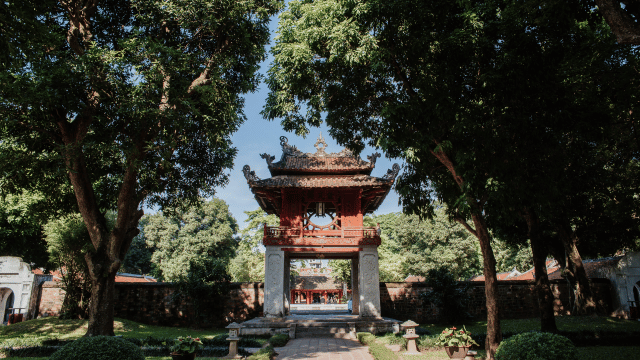When we talk about the concept of Mıllıeyt, we are delving into a rich and complex topic that has played a significant role in shaping societies and nations throughout history. Mıllıeyt can be defined as the collective consciousness and shared values of a group of people, encompassing their language, traditions, customs, and beliefs. It is a concept deeply rooted in the idea of identity and belonging, and it has been a driving force behind the formation and preservation of nations.
Historical Context of Mıllıeyt
To fully understand the significance of Mıllıeyt in the modern world, we must first explore its historical context. The concept of Mıllıeyt emerged during the 18th and 19th centuries, in the wake of nationalist movements and the rise of modern nation-states. As European powers sought to consolidate their territories and establish a sense of unity among their citizens, the idea of Mıllıeyt became a powerful tool for mobilization and cultural cohesion.
During this time, intellectuals and scholars began to emphasize the importance of language and shared heritage in fostering a sense of national identity. This led to the development of national languages, the preservation of cultural traditions, and the celebration of historical figures and events. Mıllıeyt became a rallying cry for those seeking independence and self-determination, as it provided a common ground on which people could unite and fight for their rights.
Significance of Mıllıeyt in the Modern World
In the modern world, Mıllıeyt continues to hold immense significance. In an era of globalization and increasing interconnectedness, the concept of Mıllıeyt provides a sense of belonging and rootedness in an ever-changing world. It serves as a reminder of our shared heritage and the values that bind us together as a community.
Mıllıeyt plays a crucial role in shaping national identities and fostering a sense of patriotism. It helps to strengthen social cohesion and provides a framework for shared values and aspirations. It is through the concept of Mıllıeyt that nations are able to preserve their unique cultural heritage and pass it on to future generations.
Cultural Impact of Mıllıeyt

One of the most significant aspects of Mıllıeyt is its impact on culture. Mıllıeyt influences the way we perceive ourselves and others, shaping our language, customs, and traditions. It is through Mıllıeyt that cultural expressions such as art, literature, music, and dance are born.
Mıllıeyt serves as a source of inspiration for artists and writers, who often draw upon their national identity and heritage to create meaningful works. It is through these artistic expressions that Mıllıeyt is able to transcend borders and connect people from different cultures and backgrounds.
Mıllıeyt as a Symbol of National Identity
For many nations, Mıllıeyt is not just a concept but a symbol of national identity. It represents the shared history, values, and aspirations of a nation, and serves as a unifying force. Mıllıeyt is often celebrated through national holidays, festivals, and cultural events, where people come together to express their pride and love for their country.
The symbol of Mıllıeyt can be seen in national flags, anthems, and other patriotic symbols. It acts as a reminder of the sacrifices made by previous generations and the collective achievements of the nation. Mıllıeyt instills a sense of belonging and loyalty among citizens, fostering a strong sense of national identity.
Mıllıeyt in Art and Literature

Art and literature have always been powerful mediums for expressing Mıllıeyt. Artists and writers often draw upon their national identity and cultural heritage to create works that resonate with their fellow countrymen. Through their creations, they seek to evoke a sense of pride and love for their nation.
In literature, Mıllıeyt is often explored through themes of national identity, history, and cultural traditions. Authors use storytelling to capture the essence of Mıllıeyt, allowing readers to connect with the characters and their experiences on a deeper level. Similarly, in art, Mıllıeyt is often depicted through symbols, motifs, and themes that are unique to a particular culture or nation.
Mıllıeyt and Globalization
In an increasingly globalized world, the concept of Mıllıeyt has faced challenges and criticisms. Some argue that Mıllıeyt promotes exclusion and divisiveness, as it emphasizes the differences between nations rather than their commonalities. Others believe that Mıllıeyt is an outdated concept that hinders progress and cooperation on a global scale.
However, proponents of Mıllıeyt argue that it is essential for preserving cultural diversity and ensuring the survival of unique traditions and languages. They believe that Mıllıeyt can coexist with globalization, as long as it is embraced in a way that promotes understanding, tolerance, and respect for other cultures.
Challenges and Controversies Surrounding Mıllıeyt
Mıllıeyt has not been immune to controversies and challenges. In some cases, the concept of Mıllıeyt has been used to justify discrimination and exclusion, leading to conflicts and tensions between different ethnic and cultural groups. It has also been exploited by politicians and leaders for their own agendas, often at the expense of minority communities.
Furthermore, the rise of multicultural societies has raised questions about the relevance and applicability of Mıllıeyt. In these diverse communities, individuals often identify with multiple cultural and ethnic backgrounds, blurring the lines of traditional notions of Mıllıeyt. This has sparked debates about the need for a more inclusive and fluid understanding of national identity.
Future Prospects of Mıllıeyt
As we look to the future, the concept of Mıllıeyt will continue to evolve and adapt to the changing dynamics of the world. In an era of increasing migration and multiculturalism, Mıllıeyt will need to find ways to accommodate diverse identities and foster a sense of belonging for all individuals.
It is likely that the concept of Mıllıeyt will become more fluid and inclusive, embracing the idea of a global citizenship that transcends national boundaries. The challenge lies in striking a balance between preserving cultural heritage and fostering a sense of unity and common purpose among diverse communities.
Conclusion
In conclusion, Mıllıeyt is a concept that holds significant importance in the modern world. It serves as a source of identity, belonging, and cultural preservation for nations and communities. While it has faced challenges and controversies, Mıllıeyt continues to play a vital role in shaping our understanding of ourselves and the world around us. It is through Mıllıeyt that we can celebrate our shared heritage, foster social cohesion, and build a more inclusive and tolerant society.




